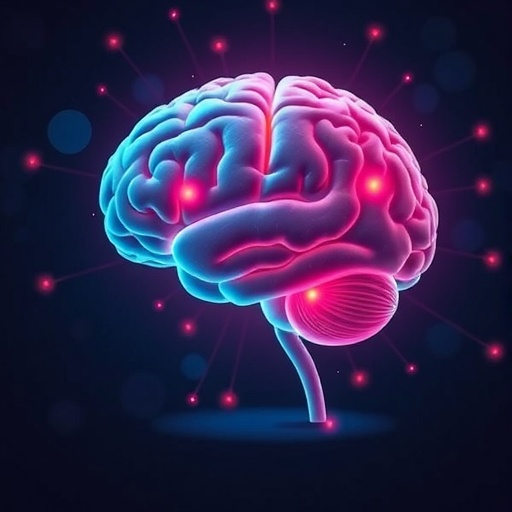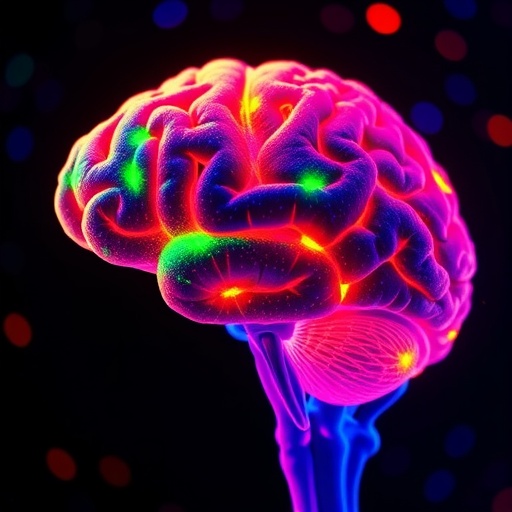Credit: Virtual Augmentation and Simulation for Surgery and Therapy, Western University
Recent months have brought striking new advances in the fight against heart disease. The Experimental Biology 2017 meeting (EB 2017) will showcase groundbreaking cardiovascular research in basic biology, engineering and patient therapeutics.
Use of "Neuroprosthetics" to Restore Heart Function in Patients with Spinal Cord Injury
Dysfunctions in basic, non-consciously controlled bodily processes such as blood vessel and heart function are the most common cause of death after a spinal cord injury. In a new study, researchers from the University of British Columbia and University of Louisville were able control the cardiovascular system in three people with spinal cord injuries by electrically stimulating the spinal cord using an implanted "neuroprosthetic" device. These spinal cord injured individuals showed significant improvements in blood vessel and heart function, cognitive function, blood pressure and flow of blood to the brain. The achievement raises hopes that neuroprosthetic implants for stimulating the spinal cord can improve patients' prospects after spinal cord injury.
Aaron Phillips will present this research at the American Physiological Society's annual meeting at 12:30-2:15 p.m. Wednesday, April 26, in Skyline Ballroom (poster W193 1077.1) (abstract).
Image available.
Heart Valves Created Using 3-D Printing Help Surgeons Practice and Plan Before the Real Deal
Mitral valve regurgitation, in which blood leaks the wrong way through the mitral valve, is the most common type of heart valve disorder. Surgeons can repair the mitral valve to ensure it closes properly during each heartbeat. Surgeons prefer to repair rather than replace the valve, but repairs have a high learning curve due to the mitral valve's complex anatomy. To increase repair success rates, a team at Western University in London, Ontario, have created patient-specific mitral valve models using 3-D printing, which can be placed in a beating heart simulator. Using the realistic models to plan and practice could help surgeons personalize their surgical approach and improve patient outcomes.
Olivia Ginty will present this research at the American Association of Anatomists annual meeting at 10:30 a.m.-12 p.m. Tuesday, April 25, in Room 176AB (abstract).
Images and videos available.
A New Way to Attack Artery-Clogging Plaque
Plaque buildup in the heart's arteries is the most common form of heart disease and the leading cause of death in the U.S. Researchers at the University of Ottawa have discovered a way to inhibit key enzymes behind plaque accumulation, inflammation and rupture–the processes that lead to heart attacks, strokes and other cardiovascular problems. Suppressing these enzymes in mouse models markedly reduced plaque formation, inflammation and instability, suggesting a promising new way to slow plaque buildup and prevent dangerous ruptures.
Denuja Karunakaran will present this research at the American Society for Investigative Pathology annual meeting at 8:50-9:10 a.m. Monday, April 24, in Room W181B (abstract).
Image available.
Coaxing Human Skin Fibroblast Cells to Replenish Blood Vessels in Damaged Heart Tissue after a Heart Attack
Recent years have brought exciting advances in stem cell therapies that help rebuild heart tissue damaged during a heart attack. In a study led by researchers at the University of Illinois at Chicago, scientists have identified a crucial biochemical "switch" that directs stem-cell like progenitor cells derived from human skin fibroblasts to form either blood vessels or red blood cells. Experiments using mice show that implanting these progenitor cells induces the production of blood vessels and blood cells and markedly improves heart function after a heart attack.
Lianghui Zhang will present this research at the American Association of Anatomists annual meeting at 3:30-5 p.m. Saturday, April 22, in Room 175C (abstract).
Image available.
Visualizing Immune System Dynamics for Insights on Heart Disease and Cancer
An innovative imaging system developed by researchers at Washington University allows scientists to track, in living animals, the interactions between blood vessels and key components of the immune system in astounding detail. The team has used their method to identify factors that regulate the lymphatic system and to investigate the role of immune cells in the buildup of plaque in the heart's arteries. They hope the method will yield new insights on diseases involving inflammation and help advance immunity-based cancer therapies.
Bernd Zinselmeyer will present this research at the American Association of Anatomists annual meeting 10:30 a.m.-12 p.m. Tuesday, April 25, in Room 176AB (abstract).
Videos available.
EB 2017 is the premier annual meeting of six scientific societies to be held April 22-26 at the McCormick Convention Center in Chicago. Contact the media team for abstracts, images and interviews, or to obtain a free press pass to attend the meeting.
###
About Experimental Biology 2017
Experimental Biology is an annual meeting comprised of more than 14,000 scientists and exhibitors from six host societies and multiple guest societies. With a mission to share the newest scientific concepts and research findings shaping clinical advances, the meeting offers an unparalleled opportunity for exchange among scientists from across the U.S. and the world who represent dozens of scientific areas, from laboratory to translational to clinical research. http://www.experimentalbiology.org #expbio
Find more news briefs and tipsheets at: https://www.eurekalert.org/meetings/eb/2017/newsroom.
Media Contact
Anne Frances Johnson
[email protected]
571-271-1986
############
Story Source: Materials provided by Scienmag




